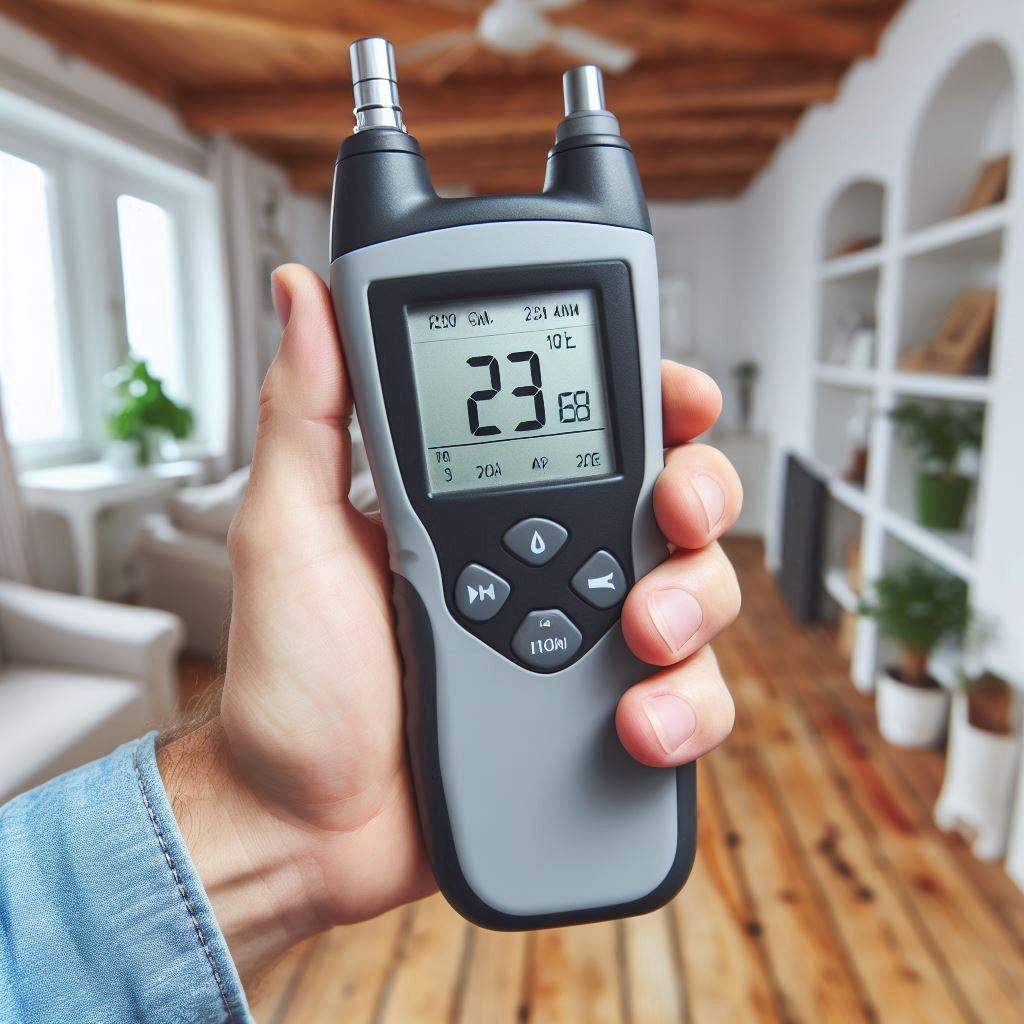Introduction to Moisture Meter Technology
Moisture meter technology has come a long way in recent years, revolutionizing the way we measure moisture content in various materials. From building and construction to agriculture and food processing, accurate moisture measurement is crucial for ensuring quality control, preventing damage, and optimizing processes.
Traditionally, moisture content was measured using destructive methods that involved taking samples from the material being tested. These samples were then subjected to time-consuming laboratory testing techniques such as oven drying or chemical analysis. Not only were these methods labor-intensive and time-consuming, but they also provided limited information about moisture distribution within the material.
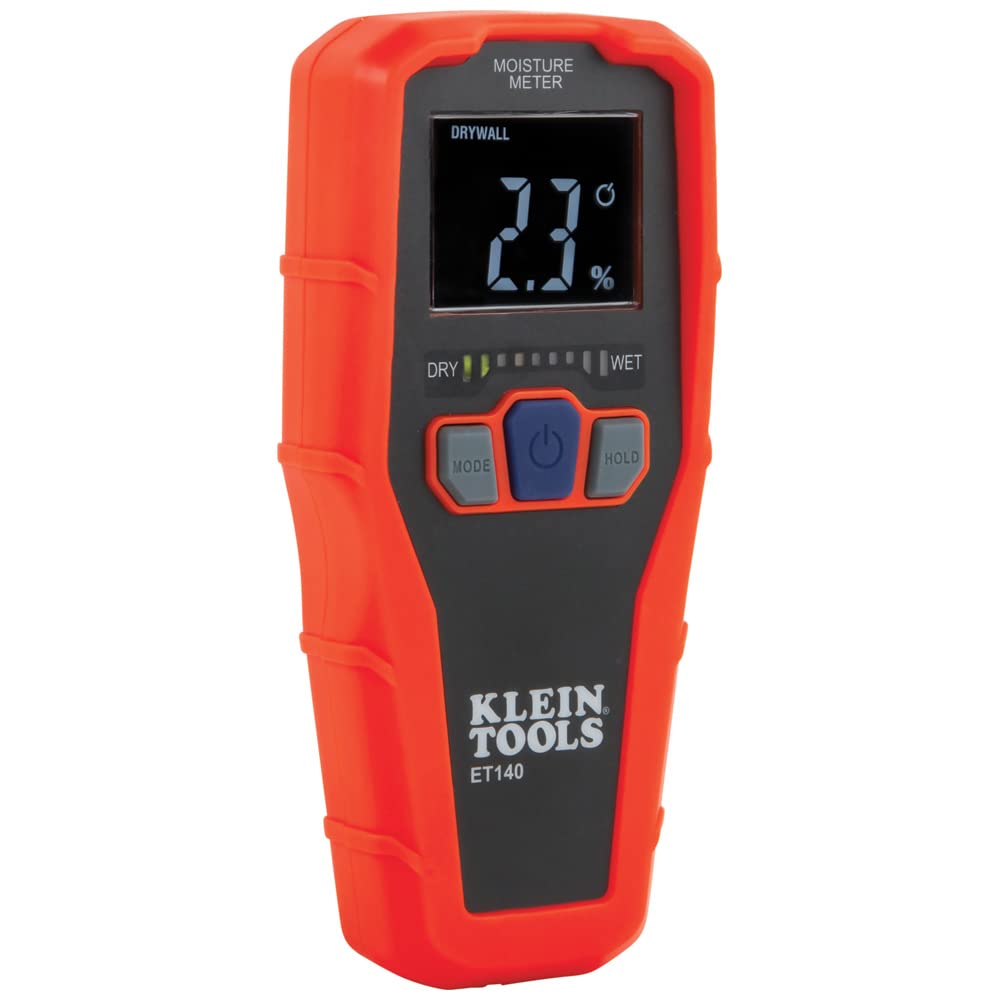
However, advancements in moisture meter technology have brought forth non-destructive testing techniques that provide faster results with higher accuracy. Non-destructive testing allows for real-time measurements without altering or damaging the material under evaluation. This has proven to be a game-changer across industries where fast and reliable assessment of moisture content is essential.
One of the most significant advancements in moisture meter technology is the use of electrical conductivity-based sensors. These sensors operate on the principle that different materials have varying electrical conductivities based on their water content. By measuring this electrical conductivity, modern moisture meters can estimate the percentage of water present in a wide range of materials quickly and accurately.
Another key development in moisture meter technology is the integration of advanced algorithms and digital data processing capabilities into handheld devices. With these sophisticated features, today’s meters are able to analyze complex signals obtained from multiple sensing elements embedded within them. The result is highly precise readings with minimal interference from external factors like temperature variations or surface irregularities.
Furthermore, some modern moisture meters utilize electromagnetic waves to determine water levels accurately. By emitting low-energy microwaves or radio frequencies into a material sample and measuring its reflection or absorption patterns, these devices can calculate its moisture content swiftly without any contact between sensor probes and test specimens.
In addition to improved measurement accuracy, contemporary moisture meters offer user-friendly interfaces with intuitive displays that allow users to interpret and analyze the collected data effortlessly. Some even have Bluetooth connectivity, enabling wireless transmission of measurements to external devices like smartphones or computers for further analysis or documentation.
The advancements in moisture meter technology have not only made measurement processes faster and more accurate but also expanded their applications across various industries. In agriculture, for instance, farmers can now precisely monitor soil moisture levels in real-time using portable handheld meters. This information helps optimize irrigation strategies, conserve water resources, and improve crop yields.
In the construction industry, moisture meters are invaluable tools for assessing building materials’ suitability before installation. By detecting excessive moisture content in wood, concrete, or drywall, these instruments prevent structural damage caused by mold growth or material deterioration over time.
The food processing industry has also greatly benefited from advanced moisture meter technology. Moisture content is a crucial parameter in food production as it affects product quality and shelf life. With precise measurements at different stages of processing – from raw ingredients to finished products – manufacturers can ensure optimal product texture and avoid spoilage due to excess moisture.
In conclusion, revolutionary advancements in moisture meter technology have transformed how we measure moisture content across various industries. From electrical conductivity-based sensors to electromagnetic wave detection methods, these modern devices offer fast and accurate non-destructive testing capabilities. With user-friendly interfaces and enhanced data processing capabilities, they enable users to make informed decisions based on real-time measurements. As a result of these innovations, businesses can achieve higher efficiency and improved quality control while reducing costs associated with traditional destructive testing methods.
The Importance of Accurate Moisture Measurement
The accurate measurement of moisture is of utmost importance in various industries, such as agriculture, construction, and manufacturing. Moisture content affects the quality and performance of many products, making it essential to have reliable and precise moisture measurement techniques. Over the years, there have been significant advancements in moisture meter technology that revolutionize how we measure moisture.
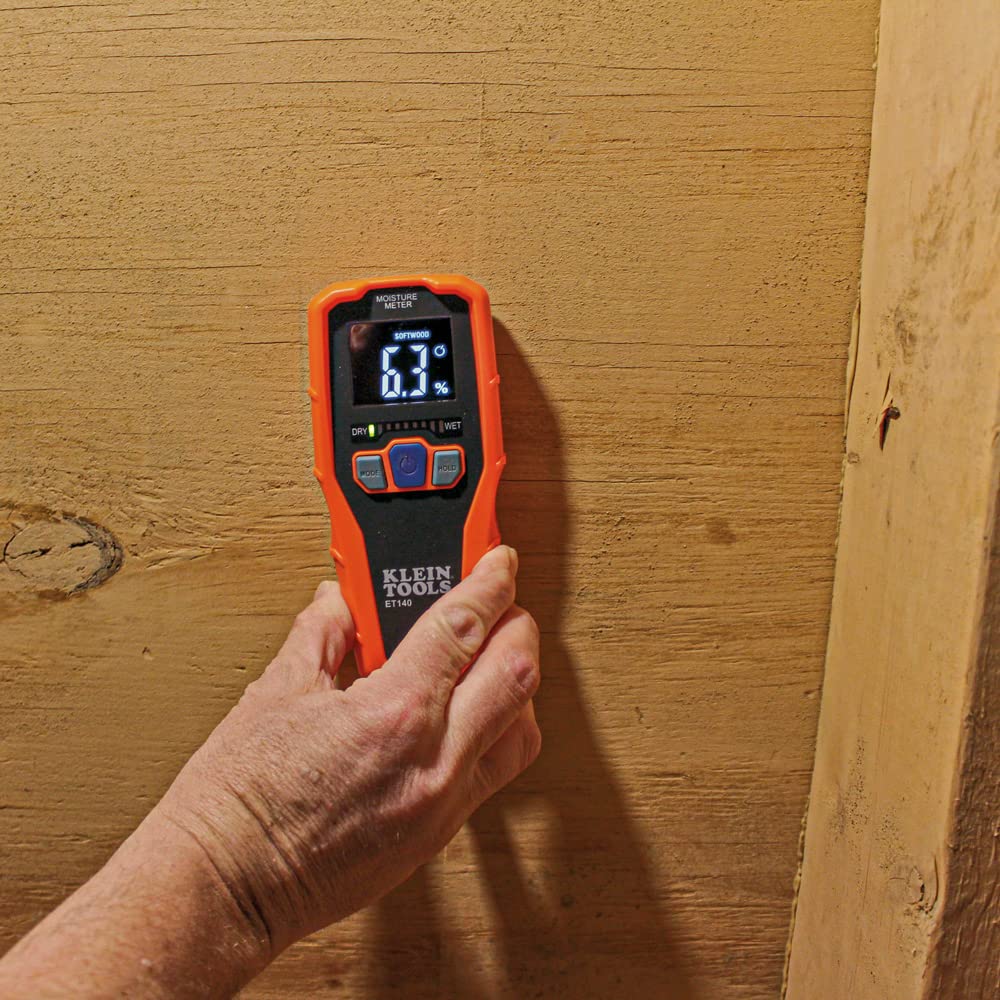
Accurate moisture measurement is crucial in agricultural practices. Farmers need to determine the moisture content of their crops to ensure optimal storage conditions. For instance, high levels of humidity can lead to mold growth or spoilage in stored grains. On the other hand, if the crop’s moisture level is too low during processing or drying procedures, it may result in reduced quality or even damage.
In the construction industry, proper measurements are vital for achieving durable structures and avoiding potential issues like cracks or decay caused by excessive dampness. Accurate knowledge about the moisture content helps contractors decide when materials like concrete or wood are ready for use or whether they require further drying before installation.
Moreover, manufacturers heavily rely on precise moisture measurement for quality control purposes. The correct amount of water within a product directly influences its physical properties and overall performance. For example, excessive moisture levels can compromise the structural integrity of paper products or cause corrosion in metal components.
Traditionally, professionals used labor-intensive methods like manual sampling followed by oven drying to estimate material’s water content accurately. However,r these conventional approaches were time-consuming and not always feasible due to sample size limitations.
Fortunately, technological advancements have led to more efficient alternatives known as electronic moisture meters that offer rapid results with minimal effort required from operators.
Electronic meters work based on different principles depending on the material being measured – capacitance-based meters for non-conductive materials like wood and resistance-based meters for conductive substances such as soil or concrete.
These devices typically consist of a probe that is inserted into the material being tested while applying an electrical current through it.The device measures how much resistance the material offers to the electrical flow, allowing an accurate estimation of its moisture content.
The introduction of handheld electronic meters has made moisture measurement accessible to a broader audience. These portable devices are user-friendly and provide instant results, making them suitable for on-site assessments. Moreover, they often come with built-in calibration features and data storage capabilities that further enhance their usefulness.
Some advanced models even include additional sensors or functionalities to measure other parameters alongside moisture content, such as temperature or humidity levels.These all-in-one devices allow professionals from various fields to gather multiple data points simultaneously for comprehensive analysis.
Overall, accurate moisture measurement is indispensable in industries ranging from agriculture to construction and manufacturing. Technological advancements in electronic moisture meters have revolutionized this field by providing faster and more reliable results compared to traditional methods. The convenience offered by handheld devices allows professionals in various sectors access to real-time information critical for decision-making processes. As technology continues evolving, we can expect even more sophisticated tools that will further improve our ability to measure and control moisture content effectively.
Traditional Methods vs Advanced Moisture Meters
Moisture measurement is a critical aspect in various industries, including agriculture, construction, and manufacturing. Accurate moisture readings are essential for ensuring product quality, preventing damage to materials, and optimizing production processes. For many years, traditional methods such as visual inspection or hand testing have been relied upon to determine moisture levels. However, with the advancements in technology over recent decades, advanced moisture meters have revolutionized the way moisture measurements are conducted.
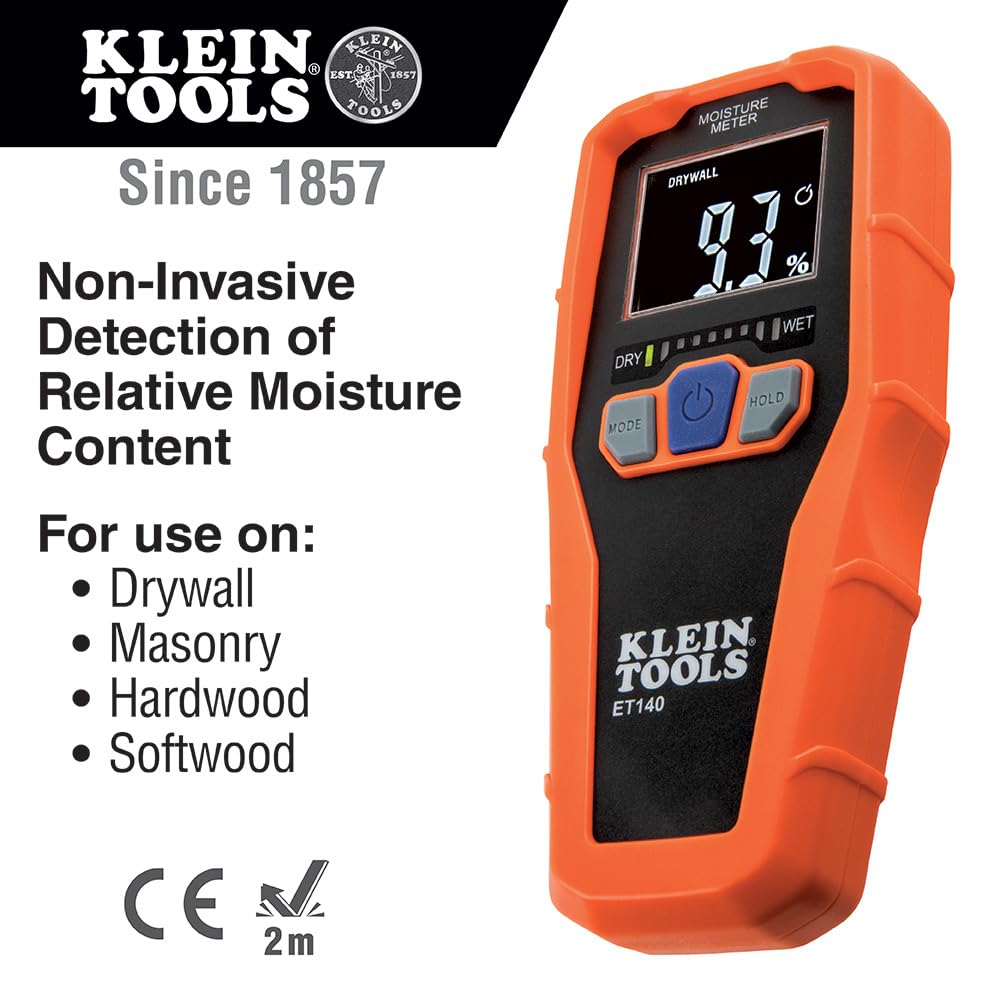
Traditional methods of moisture measurement often involved subjective assessments based on human senses or simple physical tests. In agricultural settings, farmers would rely on visual inspections of crops or tactile evaluations to estimate their moisture content. Similarly, builders would use touch-based techniques like feeling the dampness of concrete or wood to assess its dryness. These approaches were prone to errors due to individual interpretation and lacked precision.
In contrast, advanced moisture meters offer a scientific and objective approach to measuring moisture content accurately. These devices utilize cutting-edge technologies such as electrical conductivity or capacitance principles that provide precise readings within seconds. By using advanced algorithms and sensors specifically designed for each application area (e.g., grain agriculture), these meters can detect even small changes in water content with high accuracy.
One significant advantage of advanced moisture meters over traditional methods is their ability to measure non-destructively. With hand-testing techniques like probing or sampling from different areas of a material for analysis in laboratories or drying ovens could cause unnecessary damage or delay production timelines. In contrast, modern meters allow users to make quick measurements without affecting the integrity of the samples under investigation.
Moreover, advanced instruments often come equipped with digital displays that show real-time results directly on-site without relying on manual calculations or interpretations by trained personnel. This feature improves efficiency while reducing human error significantly.
Another crucial factor contributing to the superiority of modern meters is their versatility across different applications and materials compared to traditional methods’ limitations concerning specific substances only – e.g., wood, concrete, or soil. Advanced meters can be calibrated and adjusted to measure moisture levels in a wide range of materials such as food products, textiles, powders, and even gases.
Furthermore, some advanced moisture meters offer additional functionalities beyond moisture measurement. For example, they may include temperature sensors that enable users to monitor both the moisture content and the ambient temperature simultaneously. This integration allows for a better understanding of how environmental conditions impact material properties and helps prevent issues related to mold growth or structural instability due to excessive humidity.
Despite the numerous advantages provided by advanced moisture meters, it is essential to acknowledge that traditional methods still have their place in certain situations. In some cases where sophisticated equipment may not be readily available or cost-effective – e.g., small-scale farming operations or DIY home improvement projects – hand-testing techniques could suffice as rough estimations. However, when accuracy is critical for quality control purposes or complex industrial processes with substantial investments at stake, utilizing modern technology becomes imperative.
In conclusion, the advancements in moisture meter technology have revolutionized the way we measure and monitor water content across various industries. The shift from traditional subjective assessments to objective measurements using advanced instruments has greatly improved accuracy and efficiency while minimizing damage risks associated with destructive sampling methods. As technology continues to evolve rapidly, it is expected that future iterations of moisture meters will further enhance their capabilities and play an increasingly vital role in ensuring product integrity and optimizing production processes worldwide.
Understanding the Principles of Moisture Measurement
Moisture measurement is a critical aspect of various industries, including agriculture, construction, and manufacturing. Accurate moisture readings are vital to ensure product quality, prevent structural damage, and enhance overall efficiency. Over the years, advancements in technology have revolutionized moisture meter technology, providing more accurate and reliable measurements than ever before.
To understand these advancements better, it is crucial to grasp the principles behind moisture measurement. Moisture meters work based on the principle that different materials have varying electrical conductivity when exposed to moisture. This variation can be measured by passing an electrical current through the material and assessing its resistance or capacitance.
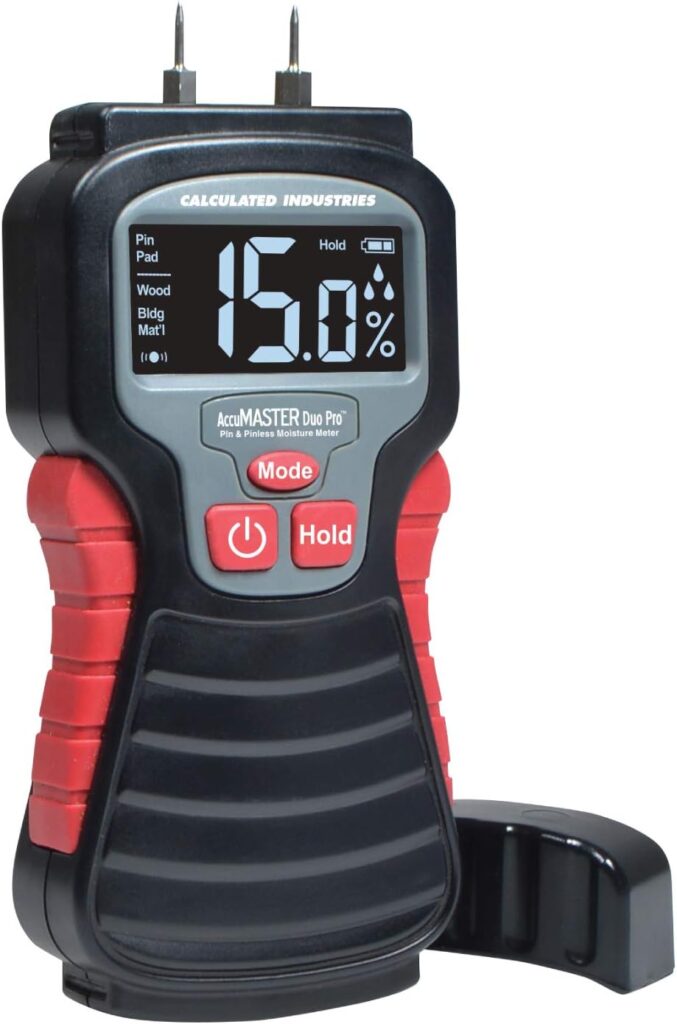
Resistance-based moisture meters are commonly used for measuring wood moisture content. They operate by sending a low-voltage electric current between two electrodes inserted into the material being tested. The electrical resistance encountered by this current correlates with the amount of water present in the material.
Capacitance-based moisture meters employ a different technique for measuring moisture levels. These devices use high-frequency radio waves that penetrate materials like concrete or soil. By analyzing changes in impedance caused by interactions between water molecules and electromagnetic fields generated by these radio waves, capacitance-based moisture meters can accurately determine moisture content.
Both resistance-based and capacitance-based techniques have their strengths and limitations concerning specific applications. However, recent technological advancements have overcome many of these limitations while improving accuracy and reliability across various industries.
One notable advancement is the introduction of digital displays on modern-day moisture meters. Digital displays provide clear numerical readings that are easy to interpret compared to analog gauges found on older models. These digital displays often come with additional features such as backlighting or adjustable font sizes for improved visibility under different lighting conditions.
Another significant development in modern-day moisture meter technology is wireless connectivity capabilities integrated into some devices’ designs. With built-in Bluetooth or Wi-Fi functionality, users can transfer measurement data wirelessly to computers or mobile devices for further analysis or record-keeping purposes—a substantial improvement over manually recording data or relying on proprietary software.
Additionally, some moisture meters now feature non-invasive measurement techniques. These devices use electromagnetic waves to measure moisture content without the need for direct contact with the material being tested. This non-destructive testing method is particularly advantageous when working with delicate materials or when damage prevention is a priority.
The accuracy and precision of moisture measurements have also been enhanced through calibration advancements. Many modern moisture meters allow users to calibrate their devices using specific materials or substances with known water content levels. This calibration ensures that readings remain accurate even in challenging environments where factors like temperature or humidity might affect measurement results.
Moreover, recent developments in software algorithms have improved the overall reliability of moisture meter measurements. Smart algorithms can compensate for variations caused by factors such as density differences within a material, ensuring consistent and accurate readings across different sample sizes or compositions.
In conclusion, advancements in moisture meter technology have revolutionized how industries measure and monitor moisture content accurately and reliably. From digital displays to wireless connectivity capabilities, these innovations offer improved functionality, ease of use, and more precise readings compared to older models. Non-invasive testing methods and advanced calibration options further enhance versatility across various applications. As technology continues to advance, it is exciting to anticipate further improvements that will continue revolutionizing the field of moisture measurement
Portable and Handheld Moisture Meters: A Game Changer
Moisture meters have long been an essential tool in various industries, such as agriculture, construction, and woodworking. These devices play a crucial role in measuring the moisture content of materials to ensure their quality and prevent damage caused by excess moisture. Over the years, advancements in technology have revolutionized moisture meter design, resulting in the development of portable and handheld models that are truly game-changers.
One significant advantage of portable and handheld moisture meters is their convenience and ease of use. Unlike traditional moisture meters that require bulky equipment or complex setups, these modern devices can be easily carried around and used anywhere. This portability allows professionals from different fields to conduct on-site measurements quickly without having to transport samples back to a laboratory for analysis.
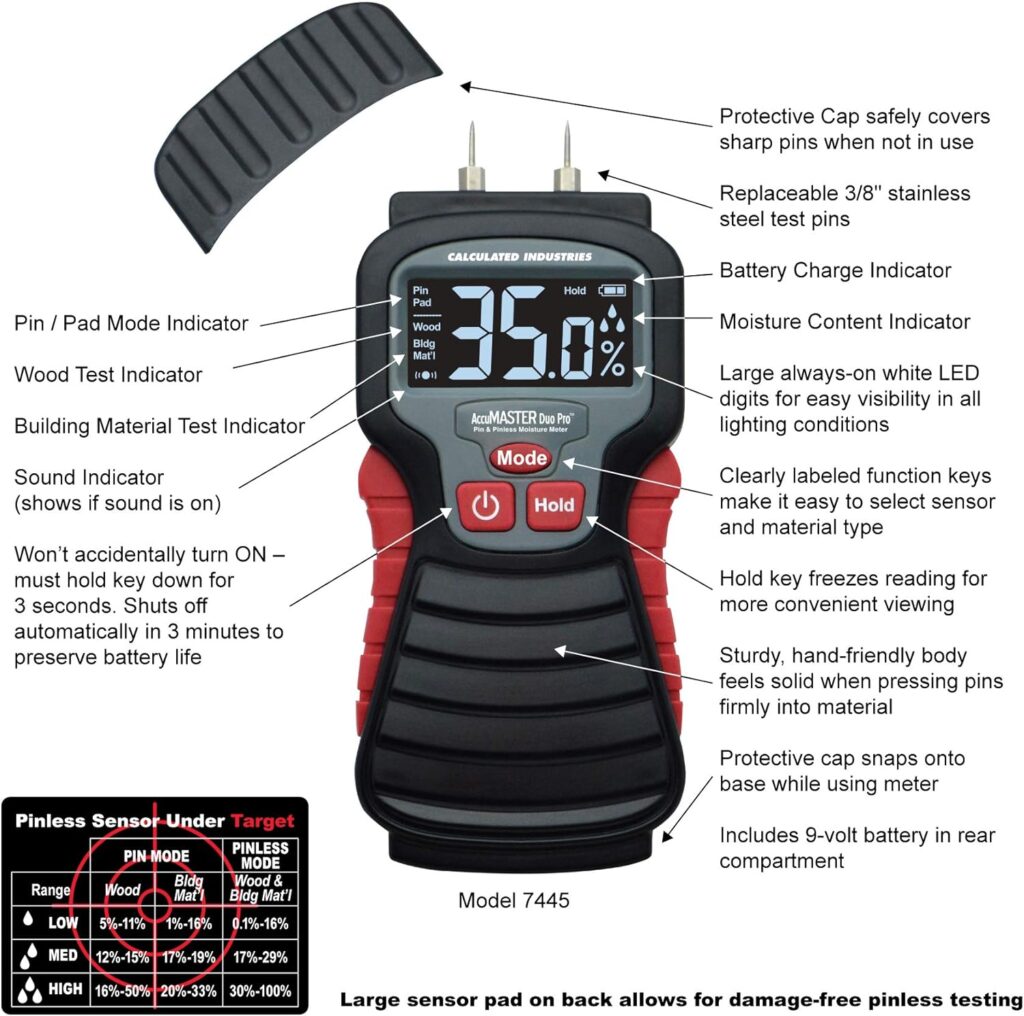
Moreover, the compact size of portable and handheld moisture meters makes them ideal for reaching areas that are difficult to access with larger instruments. For instance, woodworkers can effortlessly measure the moisture content of tight corners or hard-to-reach joints using a small handheld meter. This feature significantly improves efficiency by eliminating the need for disassembling structures or creating openings just for measurement purposes.
Another key advancement found in portable and handheld moisture meters is their enhanced accuracy. Manufacturers have invested considerable effort into developing sensors capable of providing highly precise readings even at lower levels of material humidity. This improved accuracy ensures that professionals can confidently make decisions based on reliable data obtained from these devices.
Furthermore, many modern portable and handheld moisture meters now come equipped with digital displays that provide real-time measurements directly on the device itself. Gone are the days when users had to rely solely on analog dials or separate instruments for reading results accurately. The inclusion of digital displays not only simplifies usage but also reduces human error associated with manual interpretation.
In recent years, there has also been a shift towards incorporating wireless connectivity features into portable and handheld moisture meters. With this capability, users can transmit measurement data wirelessly to smartphones, tablets, or computers for further analysis and storage. This advancement allows for seamless integration of moisture measurement data into larger datasets, facilitating comprehensive analyses and long-term tracking.
Additionally, some portable and handheld moisture meters now offer customizable settings and adjustable calibration options. Users can tailor these devices to suit their specific needs by adjusting parameters such as species correction factors or temperature compensation. This level of customization ensures accurate measurements across a wide range of materials and conditions, enhancing the versatility of these instruments.
Lastly, the advancements in portable and handheld moisture meters have resulted in improved durability and longevity. These devices are now built with rugged housing that can withstand harsh environments encountered in various industries. The inclusion of robust components ensures that professionals can rely on these instruments for years without worrying about frequent repairs or replacements.
In conclusion, portable and handheld moisture meters have truly revolutionized the way professionals measure moisture content in different materials. Their convenience, accuracy, digital displays, wireless connectivity features, customization options, and durability make them indispensable tools across a variety of industries. As technology continues to advance further, it is exciting to imagine what future innovations will bring to this essential field of measurement science.
Wireless Connectivity and IoT Integration in Moisture Meters
In recent years, moisture meter technology has undergone significant advancements. One of the most notable developments is the integration of wireless connectivity and Internet of Things (IoT) capabilities into these devices. This article explores how this integration is revolutionizing moisture measurement.
Wireless connectivity in moisture meters allows for seamless data transfer between the device and other compatible devices or platforms. It eliminates the need for physical connections such as cables or wires, making it more convenient and efficient to use. With wireless connectivity, moisture readings can be instantly transmitted to a smartphone, tablet, or computer for further analysis.
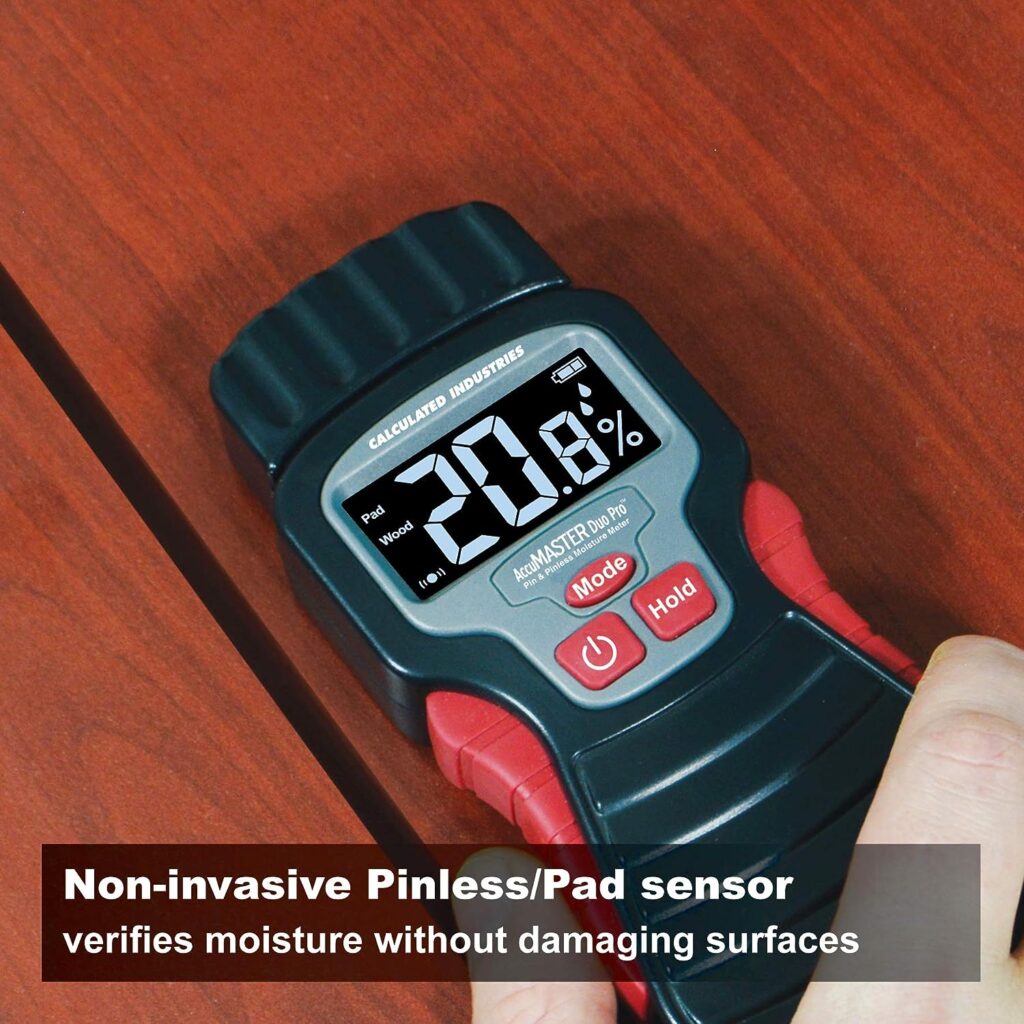
The IoT integration takes wireless connectivity a step further by enabling moisture meters to connect and communicate with other smart devices in a networked environment. This opens up new possibilities for remote monitoring and control of moisture levels across different locations.
One major advantage of integrating wireless connectivity and IoT into moisture meters is improved accuracy in measurements. Traditional methods often involve manually recording readings from various points using handheld devices or sensors that are prone to human errors or inconsistencies. With the automation provided by wireless connectivity and IoT, measurements can be collected continuously without any user intervention, leading to more precise results.
Furthermore, real-time data transmission enhances decision-making processes regarding managing moisture levels in various applications. For example, in agricultural settings where soil moisture plays a critical role in crop growth, having access to accurate information on-the-go enables farmers to make informed decisions about irrigation scheduling or determining optimal planting times.
Additionally, the ability to remotely monitor multiple sites simultaneously brings great benefits for industries such as construction or building management. Moisture-related issues like water leaks can be detected promptly through continuous monitoring via connected sensors placed strategically throughout buildings. This early detection helps prevent potential damage caused by excess humidity which may lead to mold growth or structural deterioration if left unaddressed.
Moreover, combining wireless connectivity with cloud-based storage offers expanded data management options for professionals working with large amounts of information from multiple sources simultaneously. Moisture measurements can be automatically synced to the cloud, creating a centralized database accessible from anywhere with an internet connection. This simplifies collaboration among teams and facilitates data analysis on a larger scale.
Despite these advancements, challenges remain in implementing wireless connectivity and IoT integration into moisture meters. One major concern is data security. As these devices become part of connected networks, ensuring the privacy and protection of sensitive information is crucial. Manufacturers need to invest in robust encryption protocols and regularly update their software to address potential vulnerabilities.
Furthermore, compatibility issues between different devices or platforms can pose obstacles when establishing seamless connections for data transfer. Industry-wide standards are necessary to ensure interoperability among various manufacturers’ products, enabling users to mix and match devices according to their needs without compatibility concerns.
In conclusion, the integration of wireless connectivity and IoT capabilities in moisture meters has revolutionized moisture measurement practices. The automation provided by this technology improves accuracy while enabling real-time monitoring and control across multiple locations. These advancements have significant implications for industries such as agriculture or construction where managing moisture levels is crucial for optimal performance and preventing damage. However, challenges like data security and compatibility must be addressed for wider adoption of these technologies in practical applications.
Advances in Sensor Technology for Precise Moisture Detection
Moisture measurement is a critical task in various industries, including agriculture, food processing, and construction. Accurate moisture readings are vital to ensure product quality, reduce waste, and maintain the integrity of structures. Traditional methods of moisture detection often relied on time-consuming and subjective techniques such as visual inspection or manual probing. However, recent advancements in sensor technology have revolutionized moisture measurement by providing precise and reliable results.
One significant development in this field is the introduction of capacitance-based sensors. These sensors work based on the principle that water has a high dielectric constant compared to other materials commonly found in products or building materials. By measuring changes in capacitance caused by variations in material composition due to moisture content fluctuations, these sensors can accurately determine the amount of moisture present.
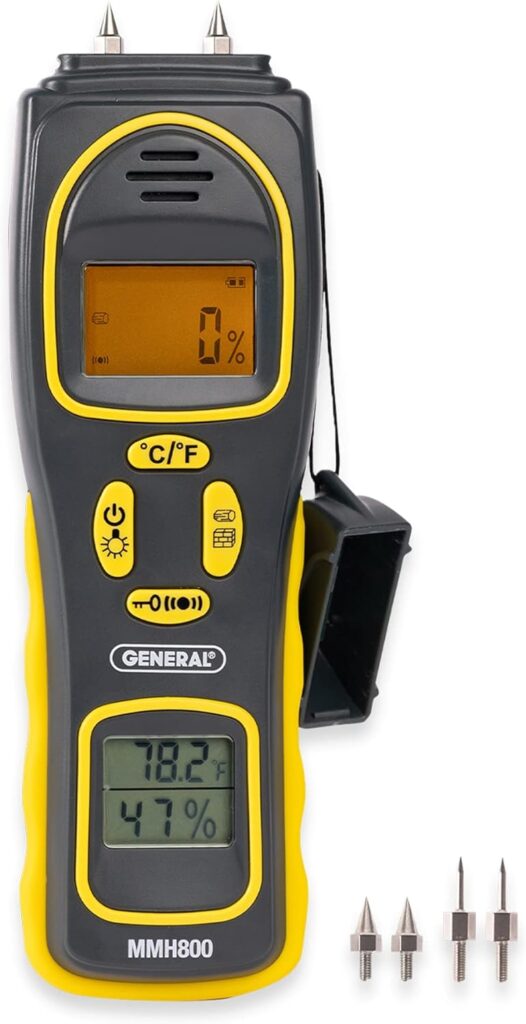
Capacitance-based sensors offer several advantages over traditional methods. Firstly, they provide real-time measurements without the need for destructive sampling or lengthy waiting periods for laboratory analysis. This feature allows operators to quickly assess moisture levels during production processes or evaluate structural conditions without interrupting operations significantly.
Moreover, these modern sensors are non-invasive and do not require physical contact with the material being measured. This characteristic eliminates potential damage that could occur when using intrusive techniques like drilling holes into walls or cutting samples from products.
Another advancement that has contributed greatly to improving moisture measurement accuracy is the integration of microcontrollers into sensor systems. Microcontrollers are miniature computer chips capable of performing complex calculations at high speeds while consuming minimal power.
By incorporating microcontrollers into moisture meters’ design, sensor manufacturers have been able to enhance data acquisition capabilities and implement sophisticated algorithms for improved accuracy and precision during measurements. These advanced algorithms account for factors such as temperature variations or ambient humidity levels that may affect readings obtained by traditional instruments.
In addition to increased accuracy and reliability, another advantage offered by microcontroller-integrated devices is their ability to store vast amounts of measurement data. This feature is especially valuable in applications where long-term monitoring and data analysis are required, such as environmental research or quality control processes.
Wireless connectivity is another area that has experienced significant advancements in moisture meter technology. Sensors equipped with wireless capabilities allow operators to remotely monitor and record moisture levels from multiple locations simultaneously. This advancement enables efficient real-time data collection without the need for physical access to sensors or manual reading recording.
Furthermore, wireless connectivity facilitates integration with existing digital systems and internet-of-things (IoT) platforms. By connecting moisture meters to these networks, users can streamline operations by automating processes like sending alerts when certain thresholds are exceeded or generating comprehensive reports based on gathered data.
Overall, advances in sensor technology have revolutionized moisture measurement techniques by providing accurate, reliable, and non-invasive solutions for various industries. Capacitance-based sensors offer real-time measurements without damaging materials being tested while microcontrollers enhance accuracy through advanced algorithms and increased storage capacity. The incorporation of wireless connectivity further improves efficiency by enabling remote monitoring and integration with digital systems. With these innovations paving the way for precise moisture detection, industries can benefit from improved product quality control, reduced waste generation, and enhanced structural integrity maintenance efforts
Applications of Revolutionized Moisture Meter Technology
The advancements in moisture meter technology have revolutionized the way moisture is measured across various industries. These technological advancements have enabled more accurate and efficient measurements, providing invaluable information for a wide range of applications.
One of the primary applications of revolutionized moisture meter technology is in the construction industry. Moisture meters are used to measure the moisture content of building materials such as wood, concrete, and drywall. This information is crucial for ensuring that these materials are properly dried before being installed or painted. Excessive moisture can lead to structural damage and mold growth, which can be costly to repair. With the new advancements in moisture meter technology, contractors can quickly and accurately assess the moisture levels in building materials, allowing them to take appropriate action to prevent potential issues.
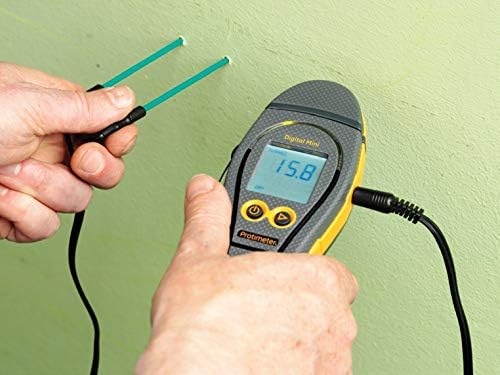
Another area where revolutionized moisture meter technology has had a significant impact is agriculture. Farmers use moisture meters to determine soil water content, which helps them make informed decisions about irrigation schedules and crop health management. Traditional methods of measuring soil moisture involved manual sampling and laboratory analysis – a time-consuming process that often resulted in delayed decision-making. However, with modern advances in sensor technology, farmers now have access to portable handheld devices that provide real-time data on soil moisture levels within minutes.
In addition to construction and agriculture, there are numerous other industries where revolutionized moisture meter technology has proven beneficial. For instance, it plays an essential role in the food processing industry by ensuring product quality and safety standards are met. Moisture meters help manufacturers determine if products such as grains or nuts have reached their optimal drying point before packaging or further processing takes place.
Furthermore, this advanced technology has also found its way into pharmaceutical manufacturing processes where precise control over humidity levels is critical for maintaining drug efficacy and stability during storage.
Moisture meters equipped with wireless capabilities allow users not only to obtain real-time measurements but also monitor trends remotely using mobile apps or web-based platforms – making them ideal tools for large-scale operations or when working in remote locations.
Moreover, the advancements in moisture meter technology have also resulted in devices that are more user-friendly and accessible. Many of these meters now feature intuitive interfaces, providing users with clear instructions on how to obtain accurate measurements. Additionally, they often come with built-in calibration options and automatic temperature compensation features, eliminating potential sources of measurement errors.
In conclusion, the advancements in moisture meter technology have brought about a revolution in various industries by providing accurate and efficient measurements for different applications. From construction to agriculture to food processing and pharmaceuticals, this advanced technology has proven invaluable in ensuring product quality, safety standards adherence, structural integrity, and optimal crop health management. With continuous research and development efforts aimed at improving the functionality and accessibility of moisture meters further, we can expect even more significant contributions from this innovative technology.
Real-time Monitoring and Data Analysis with Modern Moisture Meters
Moisture content is a critical factor in various industries, including agriculture, construction, and manufacturing. Accurate measurement of moisture levels is essential to ensure the quality and efficiency of products. Traditional methods of moisture measurement often involve time-consuming and labor-intensive procedures that may not provide real-time information. However, with advancements in moisture meter technology, real-time monitoring and data analysis have become possible.
One significant development in modern moisture meters is the integration of wireless connectivity. This allows users to monitor moisture levels remotely without the need for constant physical presence. Through Wi-Fi or Bluetooth connections, these meters can transmit data directly to smartphones or computers, providing up-to-date information on moisture content.
This wireless capability has revolutionized industries such as agriculture where crops require specific moisture conditions for optimal growth. Farmers can now place sensors equipped with modern moisture meters throughout their fields to monitor soil moisture continuously. This real-time monitoring enables farmers to make informed decisions regarding irrigation schedules, preventing overwatering or under-watering that could affect crop yield.
In construction and building materials industries, real-time monitoring plays a vital role in ensuring structural integrity and durability. Moisture can compromise the strength of concrete structures or lead to mold growth within walls if left undetected. Modern moisture meters with wireless capabilities allow contractors to track changes in humidity levels during various stages of construction continually.
Real-time monitoring also enhances the efficiency of manufacturing processes by enabling immediate adjustments based on accurate measurements. For example, wood processing facilities depend on precise control of lumber’s water content before further treatment or production steps take place. With advanced technology integrated into modern moisture meters, manufacturers can collect instantaneous data about wood’s internal conditions at different stages throughout its journey from forest to finished product.
The integration of mobile applications with modern moisture meter technology has further amplified its utility by enabling convenient data analysis through smartphones or tablets connected wirelessly to these devices. These applications provide users with detailed insights into moisture content trends, statistical analysis of collected data, and visual representations such as graphs and charts.
The ability to analyze data on the spot facilitates prompt decision-making in various industries. For instance, farmers can identify areas of their fields experiencing excessive moisture levels and take appropriate actions to prevent crop diseases or yield loss promptly. In construction, real-time data analysis helps detect potential issues caused by high humidity levels before they escalate into costly repairs.
Another advantage of modern moisture meters is their compatibility with cloud storage platforms. This allows users to store and access large amounts of collected data securely. Cloud-based solutions also enable easy sharing of information across different devices or between multiple stakeholders involved in a project or process.
With the advancement in technology, remote monitoring capabilities have become more accurate and reliable than ever before. The integration of wireless connectivity, mobile applications for data analysis, and cloud storage options has revolutionized the way we measure and monitor moisture content in various industries. Real-time monitoring provides crucial information that empowers professionals to make informed decisions promptly based on accurate measurements. As these advancements continue to evolve, we can expect further improvements in the accuracy and efficiency of moisture meter technology – ensuring better quality products while minimizing waste and maximizing productivity.
Enhancing Efficiency and Quality Control with Advanced Moisture Measurement
Moisture measurement is a critical aspect of various industries, including agriculture, construction, and food processing. Accurate moisture content determination is vital for ensuring product quality, optimizing production processes, and preventing costly damages. Over the years, advancements in technology have revolutionized moisture measurement techniques through the development of advanced moisture meters.
One significant advancement in moisture meter technology is the introduction of non-destructive methods. Traditionally, destructive testing methods involved taking samples from the material being measured and subjecting them to heating or drying processes to determine their moisture content. This approach was time-consuming and resulted in sample wastage.
Non-destructive methods eliminate these drawbacks by providing real-time measurements without altering or damaging the material under test. Modern non-destructive moisture meters utilize various technologies such as radio frequency (RF), capacitance-based sensors, near-infrared spectroscopy (NIRS), and microwave technology. These devices can measure moisture levels within seconds with high accuracy.
Capacitance-based sensors are widely used in many applications due to their simplicity and cost-effectiveness. They operate by measuring changes in electrical capacitance caused by variations in dielectric properties as a result of changes in water content. Capacitive moisture meters provide fast readings with excellent accuracy while being portable enough for field use.
Radio frequency (RF) technology offers another robust solution for non-destructive moisture measurement. RF meters work on the principle that materials’ dielectric properties change with varying water contents; hence their ability to measure these variations enables accurate determination of moisture levels within diverse materials such as grains or timber.
Near-infrared spectroscopy (NIRS) represents another notable technological leap forward for non-destructive moisture analysis. NIRS devices use infrared light absorption patterns specific to different molecular structures present within tested materials like food products or pharmaceuticals to assess their composition accurately – including water content – without any physical alteration.
Microwave technology has also gained popularity in moisture measurement due to its ability to penetrate deep into materials. Microwave-based moisture meters utilize the principle that microwaves are absorbed by water molecules, allowing for precise moisture content determination within even dense materials like concrete or soil.
Apart from non-destructive methods, advancements in moisture meter technology have led to improvements in data acquisition and analysis capabilities. Modern moisture meters often incorporate advanced electronics, microprocessors, and software algorithms that enable seamless integration with computer systems or mobile devices for data storage, analysis, and sharing.
Data logging capabilities provide valuable insights into trends and fluctuations in moisture content over time. This information is particularly crucial for quality control purposes as it enables early detection of potential issues such as excessive drying times or inadequate curing processes.
Furthermore, some advanced moisture meters can be connected to automated control systems that adjust production parameters based on real-time measurements. This automation significantly enhances efficiency by reducing human error while ensuring consistent product quality throughout the manufacturing process.
In conclusion, advancements in moisture meter technology have revolutionized the way industries measure and analyze moisture content. Non-destructive methods offer faster measurements without altering tested materials’ integrity while being cost-effective for various applications. Additionally, enhanced data acquisition and analysis capabilities improve efficiency and quality control through better monitoring of moisture-related variables. As technology continues to evolve rapidly, we can expect further refinements and innovations in this critical field of measurement science.
Future Trends and Innovations in the Field of Moisture Meter Technology
In recent years, there have been significant advancements in the field of moisture meter technology. These innovations have revolutionized how moisture is measured, leading to improved accuracy and efficiency in various industries. In this article, we will explore some of the future trends and innovations that are shaping the world of moisture meters.
One area that has seen remarkable progress is the development of wireless moisture meters. Traditionally, these devices required a physical connection to a computer or data logger for data transfer and analysis. However, with wireless technology becoming increasingly prevalent, manufacturers are now incorporating wireless capabilities into their moisture meters. This allows users to wirelessly connect their device to a computer or smartphone, enabling real-time monitoring and remote access to data.
Another trend gaining traction is the integration of smart technologies into moisture meters. With the rise of Internet-of-Things (IoT) devices, manufacturers are finding ways to incorporate these technologies into their products. Smart moisture meters can now be connected to cloud-based platforms where data can be collected and analyzed using advanced algorithms. This not only enhances accuracy but also enables predictive maintenance by identifying patterns and anomalies in moisture levels over time.
Moreover, there has been a shift towards non-destructive measurement techniques in recent years. Traditional methods often involved drilling holes or taking samples from materials for testing purposes. However, such invasive procedures could potentially compromise the integrity of structures or products being tested. To overcome this limitation, researchers have developed non-destructive moisture meter technology that utilizes electromagnetic waves or infrared radiation to determine moisture content without causing any damage.
Furthermore, machine learning algorithms are playing an increasingly important role in advancing moisture meter technology. By training models on vast datasets comprising different material properties and environmental conditions, machine learning algorithms can improve prediction accuracy over time based on past observations. These intelligent systems adapt and optimize themselves based on feedback received from users continuously.
One notable innovation emerging within this domain is hyperspectral imaging for measuring surface humidity distribution accurately across large areas rapidly. This technology combines imaging and spectroscopy to capture detailed information about moisture content at different wavelengths. By analyzing the data obtained, hyperspectral imaging can provide a comprehensive map of moisture distribution, facilitating targeted interventions in areas with excessive or inadequate moisture levels.
Additionally, miniaturization has become a significant trend in moisture meter technology. Traditional devices were often bulky and required considerable power sources for operation. However, advancements in microelectromechanical systems (MEMS) have led to the development of smaller, portable moisture meters that are battery-operated and easy to use on-site. These compact devices offer increased convenience and flexibility for professionals who need to perform measurements quickly and efficiently in various settings.
In conclusion, the future trends and innovations discussed above demonstrate how moisture meter technology is undergoing rapid advancements across various fronts. Wireless capabilities, smart technologies, non-destructive measurement techniques, machine learning algorithms, hyperspectral imaging, and miniaturization are all contributing to more accurate and efficient moisture measurements in diverse industries. As these advancements continue to evolve, we can expect even greater precision and functionality from future generations of moisture meters.
